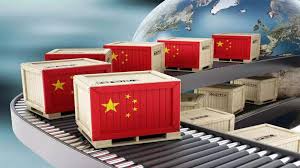In a turn of events that has left Indian markets bracing for impact, the recent tariff hikes by the United States on a multitude of Chinese imports have poised India to become the new destination for a deluge of Chinese goods. It appears that China, facing a sudden closure of a major market, is about to unleash its overstocked warehouses upon the unsuspecting Indian consumer.
“China is sitting on overcapacity in many sectors,” warned Ashwani Kumar, President of the Federation of Indian Export Organisations (FIEO), with the gravity of a meteorologist forecasting a hurricane. “Thus, the threat of dumping, in any case, is not ruled out and more so when an important market is closed for their exports. I am sure industry and the government will be keeping a close watch on imports.”
Indeed, with China holding over half of the global electric vehicle (EV) sales and dominating the battery production market—where its 2023 output of lithium-ion batteries matched the global demand of 2,600 GWh—one can almost hear the rumble of Chinese cargo ships revving up their engines.
The scenario gets more dramatic with the involvement of China’s battery titan, Contemporary Amperex Technology Co Limited (CATL). Responsible for two-thirds of the world’s battery production and a key supplier to giants like Tesla, Volkswagen, and Toyota, CATL’s products might soon flood Indian markets, much like monsoon floods our streets.
“This [tariff war] provides an opportunity for India and other competitors to chip in the supply gap,” Kumar optimistically added, likely while sketching a future where India suddenly becomes the PPE and medical glove capital of the world. “Of the products affected by additional duties on China, India has opportunities in facemasks, Personal Protective Equipment Kit (PPE), syringes & needles, medical gloves, aluminium, and iron & steel.”
While the U.S. tariff hike on EVs soared to a whopping 102.5%, with lithium-ion batteries and photovoltaic cells also facing sharp increases, it seems that India might soon witness an influx of Chinese products ranging from the practical to the peculiar. Picture this: streets filled with lithium-ion batteries, solar panels adorning every chai stall, and face masks being sold alongside samosas.
Not to be left behind, the European Union is also considering anti-subsidy duties on Chinese battery electric vehicles, which might push even more Chinese goods towards Indian shores. The European Commission’s investigation could soon declare China’s practices as unfair, adding another wave to the incoming tide.
The United States’ justification for these tariffs? They cited “unacceptable risks” to their economic security, accusing China of flooding global markets with cheap goods. However, as one wise Indian exporter noted, “One country’s risk is another country’s rummage sale!”
As Indian markets prepare for the influx, vendors are sharpening their bargaining skills, and consumers are getting ready to navigate the maze of new, affordable products. Who knows? The next time you buy a solar panel with your street-side chaat, you might just be part of the great Chinese product wave of 2024.
In the meantime, Indian authorities are standing vigilant, ready to manage the onslaught and perhaps even turn it into an opportunity. Because if there’s one thing India knows how to do, it’s turning a challenge into a colorful bazaar of possibilities.



